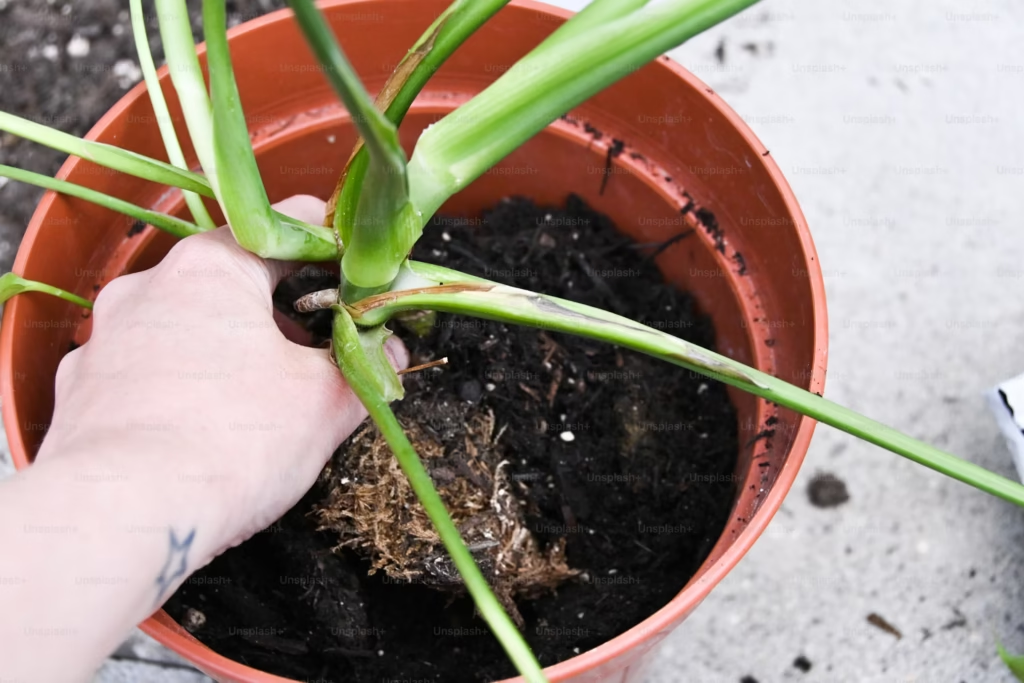
Best Organic Fertilizers for Houseplants
Houseplants are a wonderful way to bring nature indoors, but to ensure they thrive, they need the right nutrients. Organic fertilizers are an excellent choice for feeding your plants because they are environmentally friendly, improve soil health, and promote sustainable growth. Whether you’re an experienced plant enthusiast or just starting out, here’s a guide to some of the best organic fertilizers for houseplants and how to use them.
1. Compost
Compost is one of the best organic fertilizers for houseplants. It’s rich in nutrients and beneficial microorganisms that help promote healthy soil and plant growth. You can make your own compost at home using kitchen scraps, yard waste, and other organic materials.
Why It’s Great:
- Rich in Nutrients: Compost provides a balanced mix of macronutrients (nitrogen, phosphorus, potassium) and micronutrients (iron, zinc, copper).
- Soil Health: It improves soil structure, encourages beneficial microorganisms, and increases water retention.
How to Use:
- Mix a small amount of compost into the top layer of the soil every few months, or add it when repotting your plants.
- Use compost tea (a diluted liquid version of compost) as a gentle fertilizer for houseplants.
2. Worm Castings (Vermicompost)
Worm castings are an excellent organic fertilizer made from the waste of earthworms. They are nutrient-rich, slow-releasing, and beneficial for improving soil structure. Worm castings are great for both new and established plants.
Why It’s Great:
- Highly Nutrient-Rich: They contain a wide array of nutrients, including nitrogen, phosphorus, potassium, calcium, and magnesium.
- Improves Soil Structure: Worm castings improve soil aeration and water retention.
- Stimulates Root Growth: The beneficial microbes in worm castings help promote healthy root development.
How to Use:
- Sprinkle worm castings on the surface of the soil or mix them into the soil when repotting.
- You can also dilute worm castings in water to make a liquid fertilizer for a more direct application.
3. Fish Emulsion
Fish emulsion is a liquid fertilizer made from processed fish. It’s rich in nitrogen and trace minerals, making it a great choice for promoting lush, green foliage in houseplants. It’s an organic option that provides fast results.
Why It’s Great:
- High in Nitrogen: Promotes healthy leaf and stem growth.
- Fast-Acting: Fish emulsion is absorbed quickly by plants, making it a great fertilizer for plants that need quick nutrient boosts.
How to Use:
- Dilute fish emulsion with water according to the instructions on the label (usually around 1-2 tablespoons per gallon of water).
- Water your plants with the solution every 4-6 weeks during the growing season (spring and summer).
4. Seaweed Fertilizer (Kelp Meal)
Seaweed-based fertilizers, such as kelp meal, are another excellent organic option. They’re made from various types of seaweed and are rich in micronutrients, growth hormones, and trace elements. Seaweed is particularly good for improving overall plant health.
Why It’s Great:
- Promotes Strong Root Growth: Seaweed helps with root development and overall plant vigor.
- Rich in Micronutrients: It contains essential micronutrients like iron, magnesium, and calcium that promote healthy plant growth.
- Improves Stress Tolerance: Seaweed contains plant hormones that help plants resist environmental stress, such as drought or disease.
How to Use:
- Sprinkle kelp meal on top of the soil or mix it into the soil during repotting.
- Alternatively, use a liquid seaweed fertilizer by diluting it with water and applying it during the growing season.
5. Bone Meal
Bone meal is a slow-release organic fertilizer made from finely ground animal bones. It’s an excellent source of phosphorus, which is vital for flower and root development. Bone meal is particularly useful for flowering plants and those that need to establish strong roots.
Why It’s Great:
- High in Phosphorus: Promotes strong root development and enhances blooming.
- Slow-Release: Bone meal releases nutrients gradually, providing steady nourishment for your plants.
How to Use:
- Mix bone meal into the soil when repotting or sprinkle it around the base of your plants.
- Use it in the spring, just before your plants start their active growing season.
6. Neem Cake
Neem cake is a byproduct of the neem tree, often used as both a fertilizer and a pest repellent. It’s a rich source of nutrients, including nitrogen, phosphorus, and potassium, and it also contains compounds that help control pests and fungal diseases.
Why It’s Great:
- Fertilizes and Protects: Neem cake feeds your plants and helps prevent pests and soil-borne diseases.
- Rich in Micronutrients: Provides a balanced mix of essential nutrients for healthy plant growth.
How to Use:
- Mix neem cake into the soil when repotting your plants.
- You can also sprinkle neem cake around the base of plants and water it in to release nutrients.
7. Organic Pelletized Fertilizer
Organic pelletized fertilizers are made from a combination of plant-based ingredients like alfalfa, soybean meal, and other organic matter. They come in easy-to-use, slow-release pellets that slowly break down over time.
Why It’s Great:
- Balanced Nutrients: Provides a balanced supply of nitrogen, phosphorus, and potassium for general plant health.
- Slow Release: The slow-release nature of pelletized fertilizers ensures plants get steady nutrition over time without the risk of overfeeding.
How to Use:
- Sprinkle pellets around the base of the plant or mix them into the soil during repotting.
- Water the soil well to activate the pellets.
8. Cow Manure
Cow manure is an excellent natural fertilizer, rich in nitrogen and other essential nutrients. It’s often used to improve soil structure and enrich the plant’s root environment. When well-composted, cow manure is odor-free and safe for indoor plants.
Why It’s Great:
- Rich in Nitrogen: Cow manure is particularly beneficial for leafy plants.
- Improves Soil Structure: It enhances soil fertility and water retention.
How to Use:
- Use well-composted cow manure to avoid burning plants.
- Mix it into the soil when repotting or add it on top of the soil as a mulch.
9. Organic All-Purpose Fertilizer
If you’re looking for a simple, all-in-one solution for most houseplants, consider an organic all-purpose fertilizer. These fertilizers contain a balanced mix of essential nutrients and trace elements, making them ideal for a variety of plant types.
Why It’s Great:
- Versatile: Ideal for feeding a wide range of plants, from leafy greens to flowering plants.
- Safe for Indoor Use: Most organic all-purpose fertilizers are gentle on houseplants, ensuring a safe and steady nutrient supply.
How to Use:
- Follow the package instructions for dilution and frequency of use.
- Apply during the growing season, typically once a month.
10. Epsom Salt
While not a complete fertilizer on its own, Epsom salt (magnesium sulfate) is a great supplement for houseplants, especially those that need extra magnesium. It’s particularly beneficial for plants that are struggling with yellowing leaves, which can be a sign of magnesium deficiency.
Why It’s Great:
- Magnesium Boost: Epsom salt provides a quick source of magnesium, which helps with chlorophyll production.
- Improves Plant Growth: Magnesium is essential for photosynthesis and overall plant health.
How to Use:
- Dissolve 1 tablespoon of Epsom salt in 1 gallon of water and water your plants with the solution.
- Use once every 1-2 months for best results.
Conclusion
Choosing the right organic fertilizer for your houseplants is essential for their health and growth. Each type of organic fertilizer has its benefits, and by selecting the one that best matches your plant’s needs, you can ensure lush, thriving greenery. Remember to always follow the instructions for proper application to avoid over-fertilizing, and watch your houseplants flourish with these natural and sustainable options.



